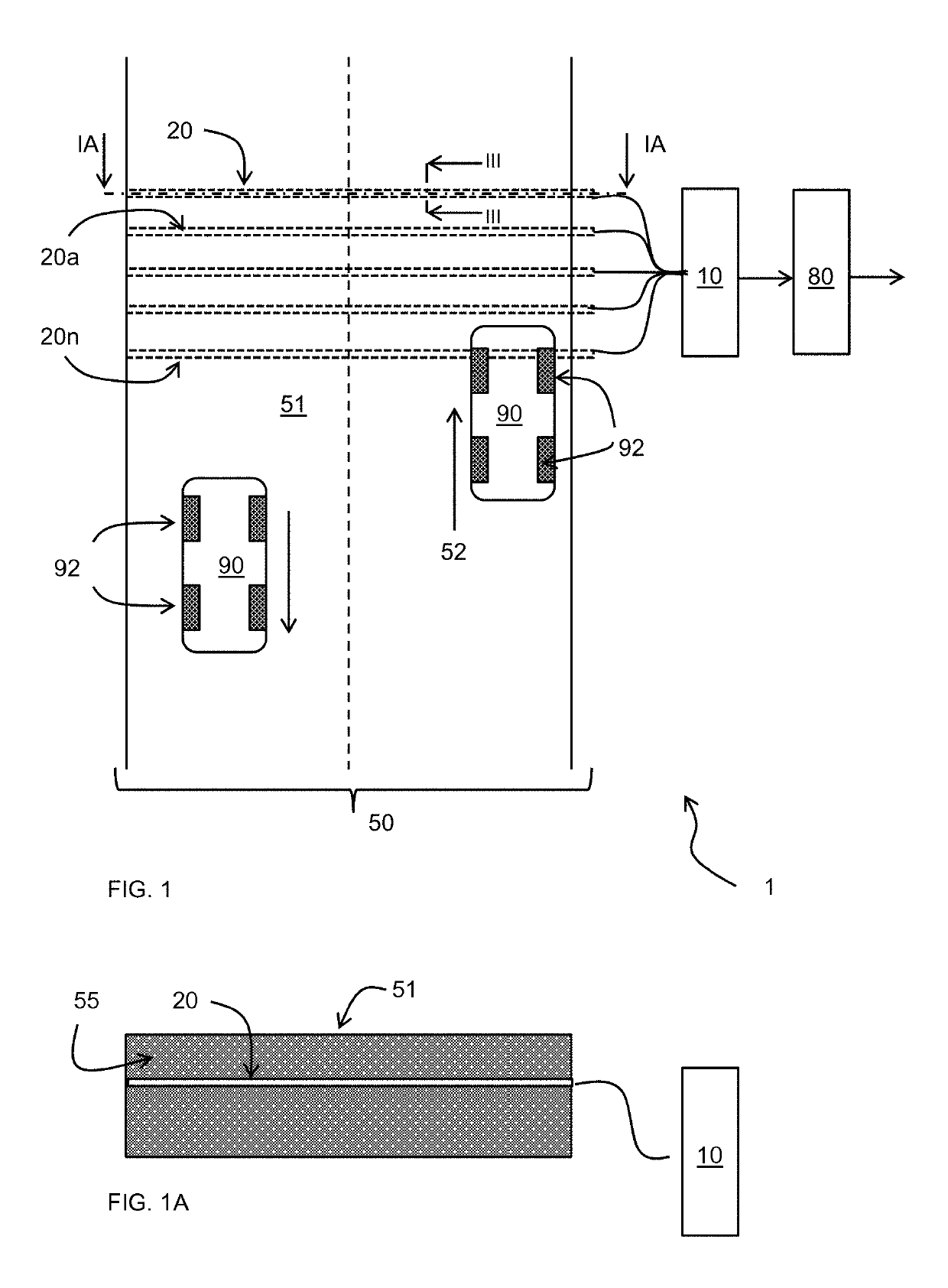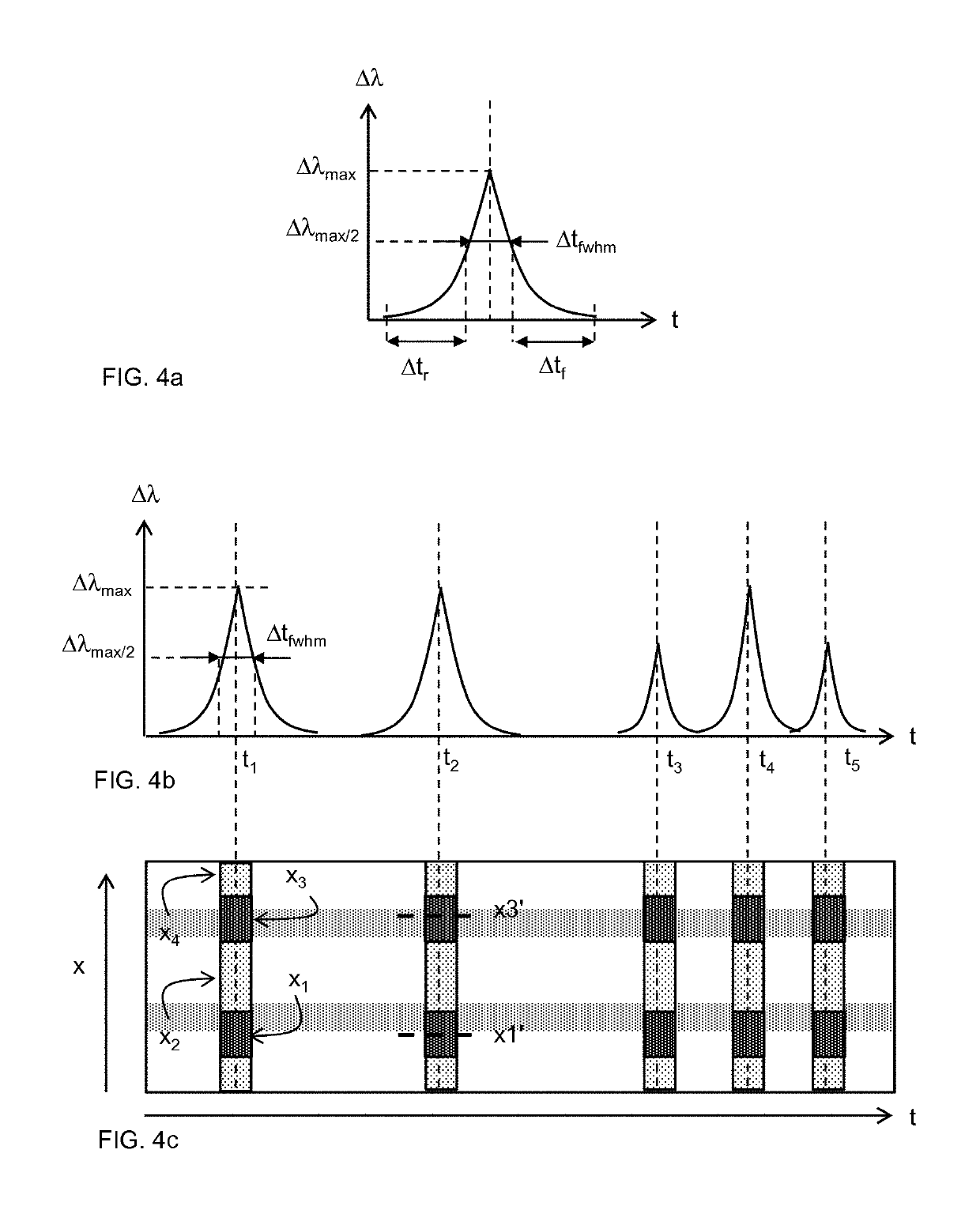Fiber-optic based traffic and infrastructure monitoring system
a traffic and infrastructure monitoring and fiber optic technology, applied in the direction of instruments, roads, constructions, etc., can solve the problems of high installation cost, large number of electronic measurement elements in the current road monitoring system, and relatively high cost of known sensor devices
- Summary
- Abstract
- Description
- Claims
- Application Information
AI Technical Summary
Benefits of technology
Problems solved by technology
Method used
Image
Examples
first embodiment
[0104]Experiments were conducted with an experimental implementation of the first embodiment as shown in FIG. 5. The arrangement comprises four fiber optic sensors 20a, 20b, 20c, 20d that are embedded in a road with traffic carrying surface 51. The road has a longitudinal direction indicated by arrow 52. The four fiber optic sensors 20a, 20b, 20c, 20d extend transverse to this direction, i.e. in the lateral direction of the road. The leftmost fiber optic sensors 20a, 20b are embedded close to each other, at a depth of 6 cm below the traffic carrying surface 51 and the rightmost fiber optic sensors 20c, 20d are embedded close to each other, at a depth of 11 cm below the traffic carrying surface 51. The neutral axis of the road used for these experiments was calculated at a depth of about 8.5 cm.
[0105]The two rightmost fiber optic sensors 20c, 20d are arranged at a distance of 1.5 m from the two left-most fiber optic sensors 20a, 20b. The fiber optic sensor 20a has a first longitudina...
second embodiment
[0137]In the second embodiment a plurality of fiber optic sensors 20A, . . . , 20N is provided that are arranged at mutually different longitudinal positions transverse to a longitudinal direction of the road and the plurality of optic strain-sensor elements that are distributed in a longitudinal direction of the road comprise optic strain-sensor elements of respective ones of plurality of fiber optic sensors 20A, . . . , 20N. In this case a first interrogator module 10A provides a detection signal for a strain sensor element of fiber optic sensors 20A, and likewise further interrogator modules up to 10N provide a respective detection signal for a strain sensor element of further fiber optic sensors up to 20N. The properly delayed signals are analogously processed as in the embodiment of FIG. 19B.
[0138]FIG. 20 shows an example of an interrogator 10 providing various signal processing features. The interrogator comprises a conversion module I1 to convert an optic response signal of a...
PUM
 Login to View More
Login to View More Abstract
Description
Claims
Application Information
 Login to View More
Login to View More - R&D
- Intellectual Property
- Life Sciences
- Materials
- Tech Scout
- Unparalleled Data Quality
- Higher Quality Content
- 60% Fewer Hallucinations
Browse by: Latest US Patents, China's latest patents, Technical Efficacy Thesaurus, Application Domain, Technology Topic, Popular Technical Reports.
© 2025 PatSnap. All rights reserved.Legal|Privacy policy|Modern Slavery Act Transparency Statement|Sitemap|About US| Contact US: help@patsnap.com



